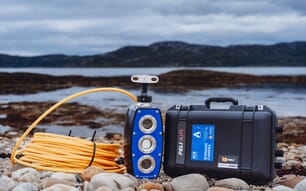The fish were tagged to understand their potential interaction with locations where they are farmed in sea-cages in Spencer Gulf - part of the "Wild Kingfish Populations in Spencer Gulf" project which looks at the "potential for parasite interactions with farmed fish, discrimination of farmed and wild fish and assessment of migratory behaviour."
The "Innovative Solutions for Aquaculture Planning and Management" Program brings together six research projects aimed at developing tools to ensure a sustainable and competitive aquaculture industry for South Australia.
These tools will
- identify more effective ways to manage aquaculture
- minimise the regulatory burden on industry
- ensure that environmental considerations for South Australian aquaculture remain a clear priority
The Program is a joint initiative of Primary Industries and Resources SA and the Fisheries Research and Development Corporation.
To date, there have been 15 recaptures after the Kingfish were free for a maximum of approximately 370 days and recaptured up to 130km away from the original capture site. Most recently, the largest Kingfish (which was tagged in September last year) weighing 36.2 kg was caught by a local fisherman in the same location !
Currently, there has been very little data about wild kingfish populations in South Australia. Kingfish captured in the Spencer Gulf are typically large and are believed to migrate to the northern Spencer Gulf seasonally, as part of a spawning migration. Adult kingfish are thought to leave the Spencer Gulf in summer and disperse after congregating for a brief period in areas such as Coffin Bay (west Eyre Peninsula). While the exact nature of kingfish migrations in South Australia remains unknown, they are critical to an understanding of the potential impact of these fish on the dynamics of parasites of farmed kingfish in Spencer Gulf.
The Adelaide University research team conducted the small-scale tagging program for kingfish in the Spencer Gulf and offshore to investigate the timing and nature of migrations.
The tagging program for kingfish in South Australian waters was conducted in conjunction with South Australian Fish Tagging (SAFTAG). SAFTAG tags were used and tagging data was provided to SAFTAG for inclusion in their locally administered database. Fish were targeted in various locations in Spencer Gulf. Charter operators fishing offshore from Port Lincoln provided additional support, allowing access to otherwise unreachable sites.
Bradley Smith was the research assistant for this project. He concentrated efforts at selected sites around Eyre Peninsula (mainly in Spencer Gulf), with the assistance of a few selected volunteers. Fish were caught on rod and reel. In October, Brad worked with retired commercial fisher, Reggie Godfrey where they netted, tagged and released several large broody kingfish in Port Augusta.
The majority of kingfish were recaptured in the same location, between three months to one year later. Three large kingfish tagged in Port Augusta have been recaptured and re-released in Port Augusta and two kingfish travelled 100-130 km. The greatest time at liberty was over one year.
As demonstrated by the Kingfish caught in southern waters, it's clear that they can move some distance in the gulf.
July 2006


